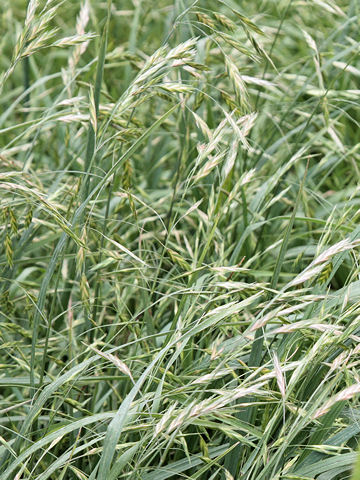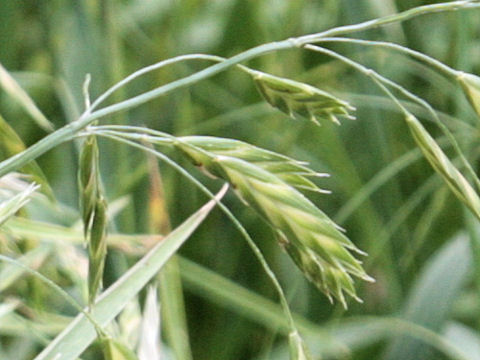 |




|

|
ìAJª´YÅ·B»ÝÅÍA¢EÌ·Ñ©çgÑnæÉLA»µÄ¢Ü·B¹Î½ârênAìÝÈÇɶ¦A³ÍSO`PQOZ`ÉÈèÜ·BsÍR`Sª©¶µAtÍLü`ÅaçÉѪ¶¦Ü·BT©çW²ëA~Ôð¾µAÜÎçÉââå«È¬äð¯ܷB¬äÍâj`ÅAU`POÂ̬ԩçÈèÜ·B
|

|
ClÈXYm`qL®Ì½NÅAw¼Í Bromus catharticusBp¼Í Rescue grassB
|

|
The Rescue grass (Bromus catharticus) belongs to Poaceae (the Grass family). It is a perennial herb that is native to South America. Now a days, it is naturalized worldwidely in temperate to warm-temperate areas. This herb grows in roadsides, waste places or streambanks and can reach 40-120 cm in height. The stems are 3-4 fascicled, and the leaves are broad linear with sparing hairs. The panicles come in May to August, and borne largish spikelets sparingly. The spikelet is lanceolate, and composed of 6-10 floscules.
|

|
AJEeLTXB}bLj[sun[h~
[WAvÉÄA2007N0406úBeB(photo by Jon Suehiro)
|

